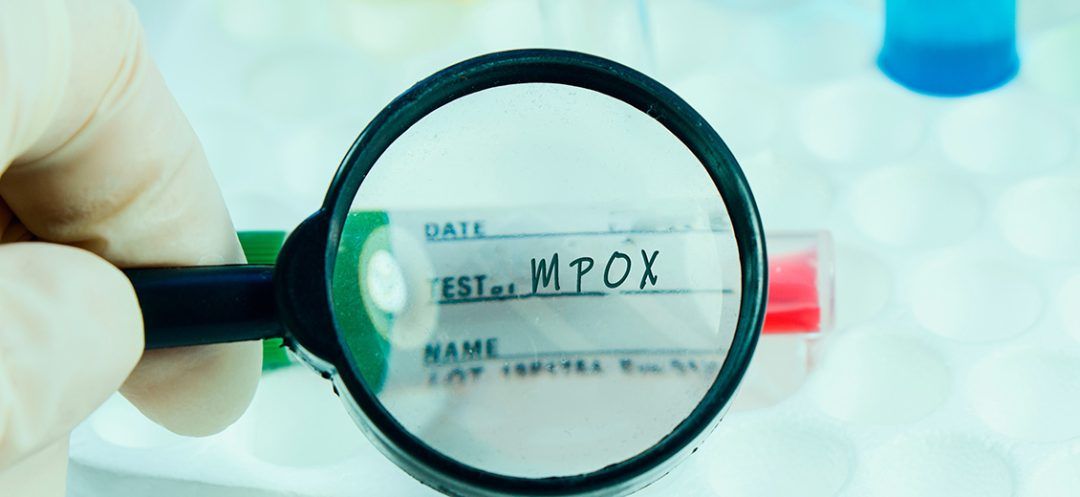
In response to the resurgence of mpox, the World Health Organization has declared, for the second time in two years, a "Public Health Emergency of International Concern." However, this viral disease is far from being the "new COVID-19."
In 2022, as SARS-CoV-2 was mutating into less virulent strains, monkeypox (mpox) infections were gradually increasing. As its scientific name suggests, simian orthopoxvirus refers to an infectious disease caused by an orthopoxvirus, a pathogen related to the human smallpox virus, which was eradicated in 1977 through vaccination. This is a point worth emphasizing in an era of growing skepticism and distrust towards science. The mpox virus was initially isolated from lesions found on primates imported to Copenhagen in 1958, hence the name "monkeypox." Following an initial outbreak in 2022, this viral disease has recently seen a resurgence, prompting the WHO to declare a "Public Health Emergency of International Concern" (PHEIC) on August 14, 2024, for the second time in two years. So, what is this about?
International Coordination
According to the International Health Regulations adopted by the WHO Health Assembly and revised in 2005 following the SARS epidemic in 2002-2003, a PHEIC is defined as "an extraordinary event determined to constitute a public health risk to other States through the international spread of disease and to potentially require a coordinated international response." Since this revision, the WHO has declared eight PHEICs: the H1N1 influenza pandemic in 2009, the spread of wild poliovirus cases in May 2014, the Ebola virus outbreak in West Africa in August 2014, the Zika virus outbreak in the Americas in 2016, the Ebola virus outbreak in Kivu in 2019, the COVID-19 pandemic in 2020 and the mpox outbreaks in 2022 and 2024.
New COVID?
"Mpox is not the 'new COVID-19'," reassured Dr. Hans Kluge, WHO Regional Director for Europe, during a press briefing on August 20, 2024, at the Palais des Nations in Geneva. However, he emphasized that "we must tackle mpox together – across regions and continents," noting that "how we respond now, and in the years to come, will prove a critical test for Europe – and the world." This new epidemic once again highlights how the neglect of infectious diseases in underprivileged countries can suddenly emerge as an unforeseen global threat. Often overlooked by international funding agencies, African countries have long been left to their own devices—neglected tropical diseases (NTDs), as well as outbreaks of West Nile virus, Zika virus, Chikungunya virus and more recently mpox virus, serve as stark examples.
Chronology of an Emergency
To better understand this recent PHEIC, it is necessary to trace the history of the emergence of the last two mpox-related epidemics. The first European case was reported in April 2022 in the United Kingdom, in a patient who had traveled to Nigeria. A month later, on May 21, 2022, the WHO announced that 92 confirmed cases of the disease had been detected in 12 countries outside the endemic regions of Central and West Africa. Hundreds of cases were reported in the following weeks, and thousands in the following months, in various countries with no direct link to an endemic region. On July 23, 2022, WHO Director-General Dr. Tedros Adhanom Ghebreyesus declared the mpox outbreak a PHEIC. According to statistics published by the Centers for Disease Control and Prevention (CDC) in the United States, 99,518 mpox cases were reported worldwide in 115 countries as of August 6, 2024, with only 4,322 cases in endemic countries.
According to Africa CDC, 17,541 mpox cases and 517 deaths from the disease have been reported since the beginning of the year in 13 African countries. These figures represent a 160% increase in cases and a 19% increase in deaths compared to the same period in 2023. 685 cases have been reported in 20 European Union countries, according to statistics published by the European Centre for Disease Prevention and Control. The Lebanese Ministry of Public Health announced on August 16, 2024, that no new mpox cases have been reported in Lebanon since March. "It is clear that a coordinated international response is needed to stop these outbreaks and save lives," noted the head of the WHO in a press release on August 14.
Transmission and Prevention
In endemic countries, the transmission of monkeypox primarily occurs through direct contact with infected animals (such as monkeys, squirrels, rats and dormice), often when hunting, capturing or handling these animals. Human-to-human transmission, however, is more frequent and was responsible for the 2022 and 2024 outbreaks. It occurs through close contact with a symptomatic person, including prolonged face-to-face contact, which facilitates the transmission of the virus through respiratory droplets or secretions, as well as skin-to-skin contact, particularly through skin lesions or during sexual contact, mouth-to-mouth or mouth-to-skin contact. In addition, contaminated objects are also vectors of transmission. Most people experience a mild form of the disease, including a blistering rash, with recovery typically occurring within three weeks.
Swelling of the lymph nodes may be observed, indicative of an immune response, and it may be accompanied by fatigue, chills, back pain, sore throat and malaise. However, severe forms of the disease can occur, with a fatality rate of 10.6% for infections with clade I (a type of virus found in the Congo Basin in Central Africa) and 3.6% for those with clade II (another type found in West Africa). No vaccine has been specifically developed against mpox to date. However, according to a study published in 2023 in the New England Journal of Medicine, the smallpox vaccine can provide 66% protection in fully vaccinated individuals (who received two doses) and 35.8% protection in partially vaccinated individuals (who received only one dose). No officially authorized treatment exists for this disease.


Comments